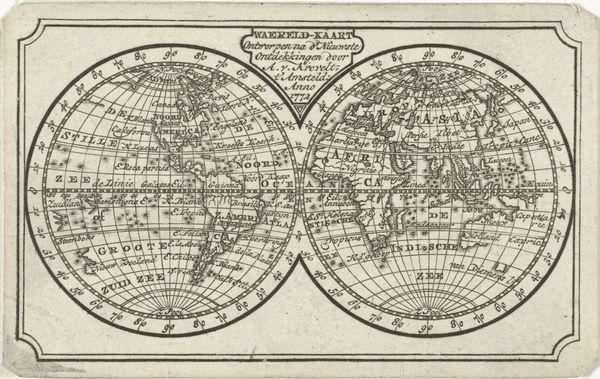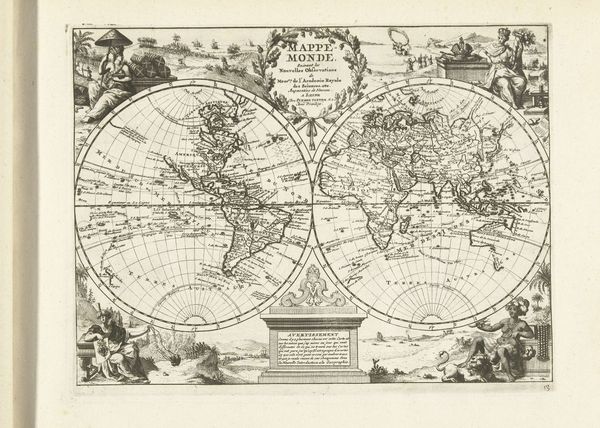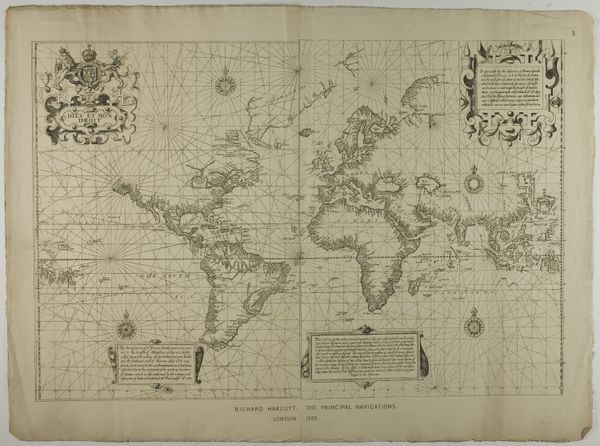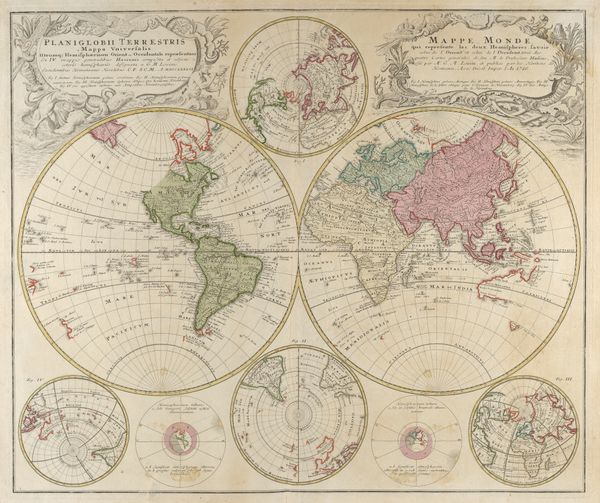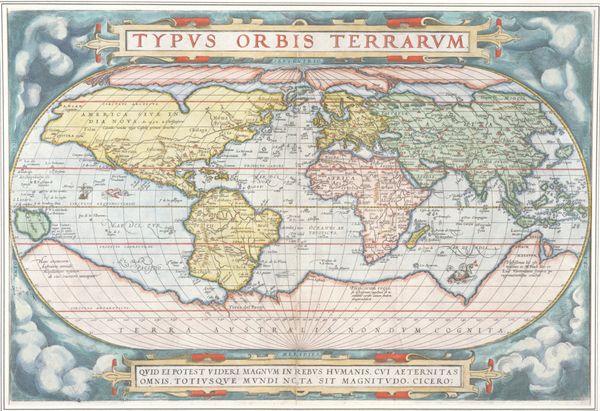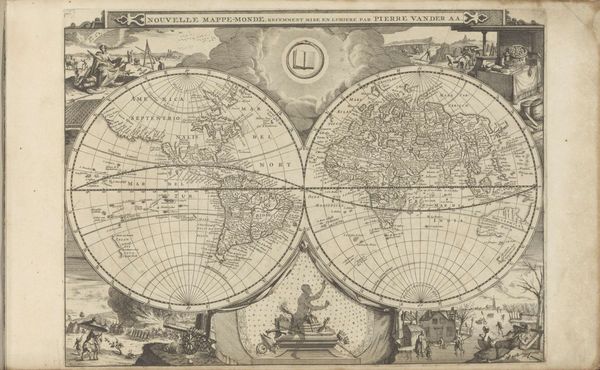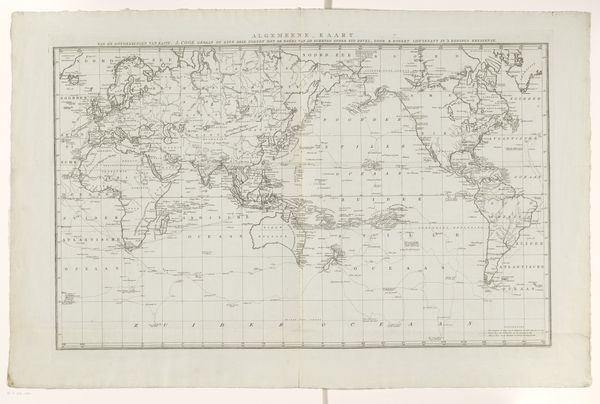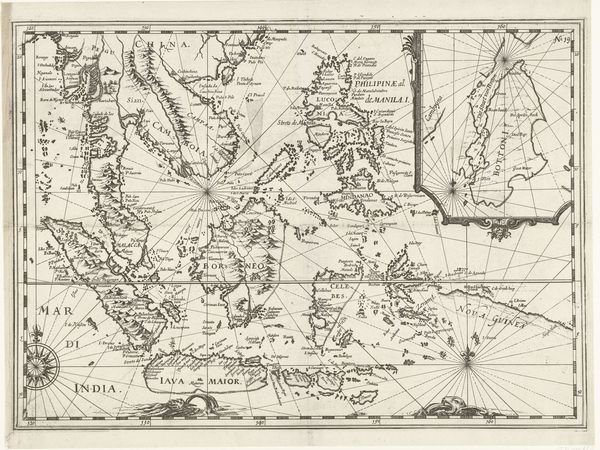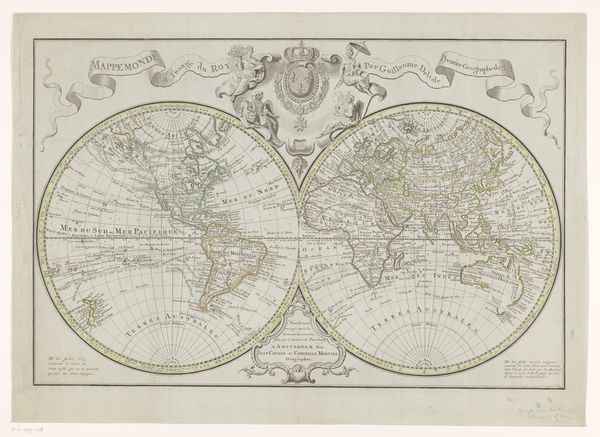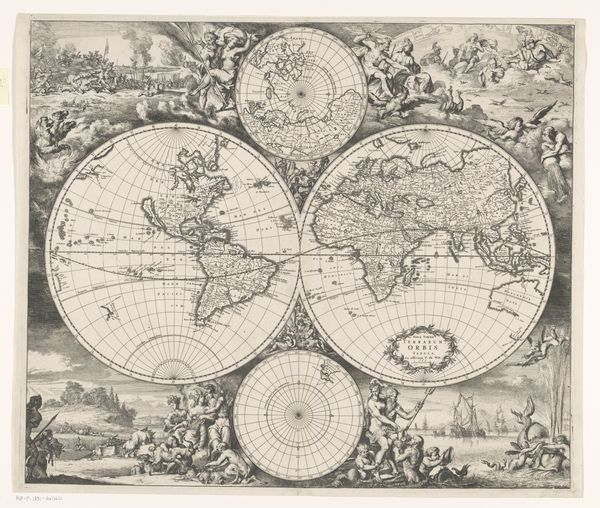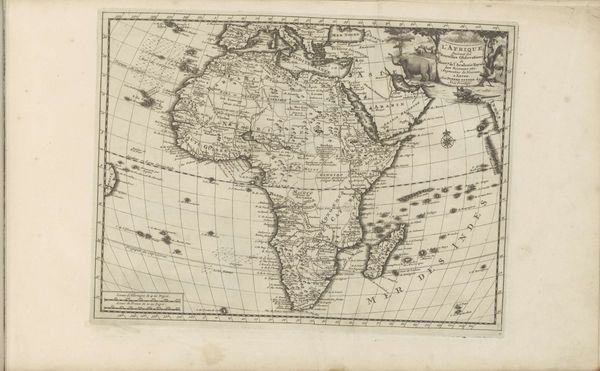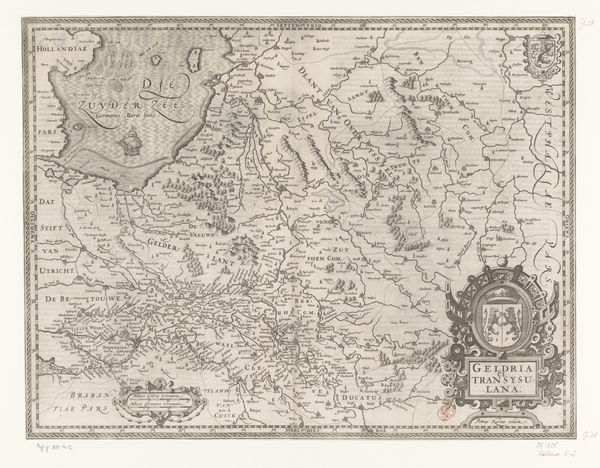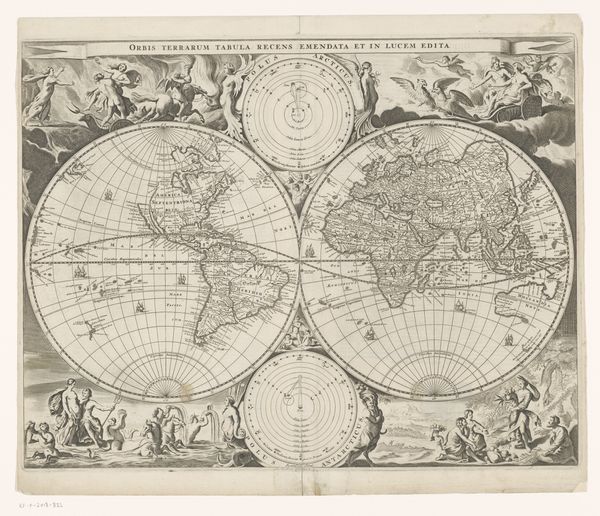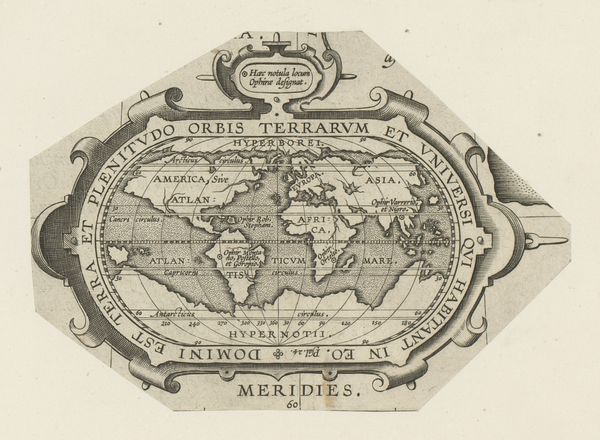
Kaart van de wereld met de reizen van Joris van Spilbergen en Jacob le Maire om de wereld, 1614-1617 1617 - 1646
0:00
0:00
print, engraving
#
dutch-golden-age
# print
#
pen illustration
#
geometric
#
history-painting
#
engraving
Dimensions: height 320 mm, width 448 mm
Copyright: Rijks Museum: Open Domain
Curator: Here at the Rijksmuseum, we have a fascinating Dutch Golden Age engraving: "Kaart van de wereld met de reizen van Joris van Spilbergen en Jacob le Maire om de wereld, 1614-1617," created sometime between 1617 and 1646. Editor: What strikes me is the sheer confidence embedded in this map's geometric order. There's such a striving for clarity. Yet, at the same time, a distinct incompleteness given the geographical gaps. Curator: Precisely. The map serves as more than a geographical tool. The linear precision and the cartographic rendering reflect an underlying framework of control, a very structural endeavor that places 'the world' in an understandable system. Note, if you will, the text carefully aligned to compass directions—an aesthetic attempt at rationalizing what remains unmapped. Editor: From a materialist perspective, I think about the labor and the accessibility, however limited, of this kind of printed knowledge. Each line on the plate, the ink itself, is an act of early globalization, intended for circulation. How widely available was it really and to what social class? It embodies power through possessing knowledge about navigation. Curator: Undeniably. The act of mapping is an exertion of authority. Its symbolism goes hand-in-hand with power. Consider the projection chosen; it orients the viewer towards specific centers of influence, consciously or not. And even elements such as lettering impact our experience and understanding of space on the page, organizing thought processes. Editor: Absolutely. Beyond that, thinking of the paper itself, handmade in its time, you could argue it makes this map almost like an early form of propaganda; reinforcing a vision of the world from a specifically European, colonial standpoint for contemporary consumption and likely nationalistic fervor. Curator: Quite true. This particular piece encourages a detailed semiotic analysis of both its explicit and implicit claims. Thank you for casting the role of process. Editor: The value is to reveal production and historical social standing.
Comments
No comments
Be the first to comment and join the conversation on the ultimate creative platform.
